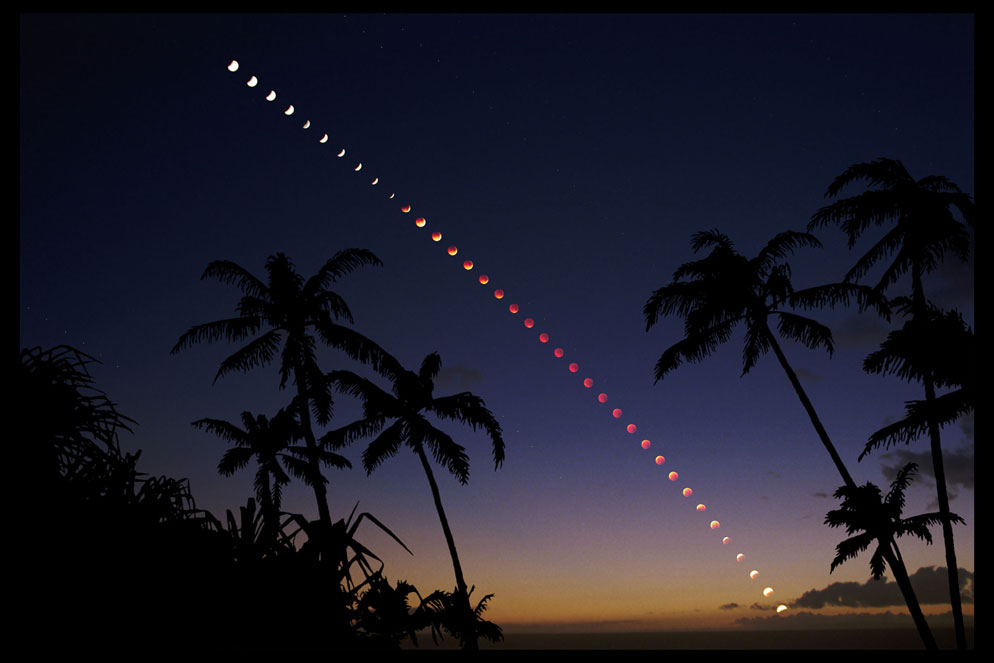With the upcoming super moon lunar eclipse coming this Sunday in the US, I'm wanting to get a few tips to best have the most success.
I'm shooting with a K10D and a K-5 and a variety of lens options (DA15/4, Sigma 10-20, DA16-45/4, M28/3.5, DA35/2.4, DA40/2.8, FA50/1.4, 90/2.8, M135/3.5, DA55-300, Sigma 400/5.6 (Ø72).)
I have a few shots in mind, and figure I'd like to set up one of the cameras as a time lapse, and then some other shots with the other body + long lens.
One shot I'd like to attempt is (not mine) described here
How to Photograph a Lunar Eclipse from Nikon 
I'd like to also get these turned into a short (15 sec) video as well, so I figure that I need 360 (1 pic every 34 sec) images over the duration of the eclipse (3hr 20min)
So I did some playing around here
Sun/Moon Calculator
to get the altitude (16°-45°) and azimuth (100°-150°) angles during the show.
Then using the field of view calculator here:
Field of View Calculator - Rectilinear and Fisheye lenses - Bob Atkins Photography
I figure to capture a ~45°x45° inclusion angle,I determined that I'd probably want to use my DA15/4
Then I started thinking about exposure changing over the course of the event, which led me here:
Lunar Eclipse Time Exposure Calculator - Xavier Jubier
My questions are related to setup, equipment choice, and exposure fiddling:
Body choice:
- On the one hand, the K-5 has the most exposure latitude and interval shooting built-in, so it would be nice to use that to good effect on the timelapse setup. I'm not sure how/if I can adjust exposure once the K-5 has been set into it's interval shooting mode.
- On the other hand, the K-5 also would be better suited for the long lens as well. and I'd likely appreciate the extra resolution for cropping "close" shots
Lens choice
- Which lens will likely produce the best results for closeups? My 400/5.6 (Ø72) isn't my sharpest lens, will I be better off using the 55-300 and cropping more, does this impact my body choices?
- Is the 15/4 the right choice for time lapse? of course I'll want to find a background that will be suitable as well, but is this too wide for a moon shot?
Exposure and other
- Are there good automatic tools for stitching and aligning time lapses (ideally it should just be stitching with a fixed tripod setup.)
- How often will I need to adjust exposure?
- What exposure parameters should I be varying? I'm assuming I'd adjust shutter with aperture fixed at f/8 and ISO 100?, but at some point the exposure time may be greater than my interval, should I try to keep the ISO consistent and then start adjusting aperture or what?
- Any better worse ISO values as my starting point?
- Am I likely to run into battery issues on the time lapse? I'll turn off the screen but will the battery hold up for 3hr 20 min, this isn't in my usual style of shooting?
- Something else I'm missing?


 Similar Threads
Similar Threads 















 Post #1 by Stickler
Post #1 by Stickler








